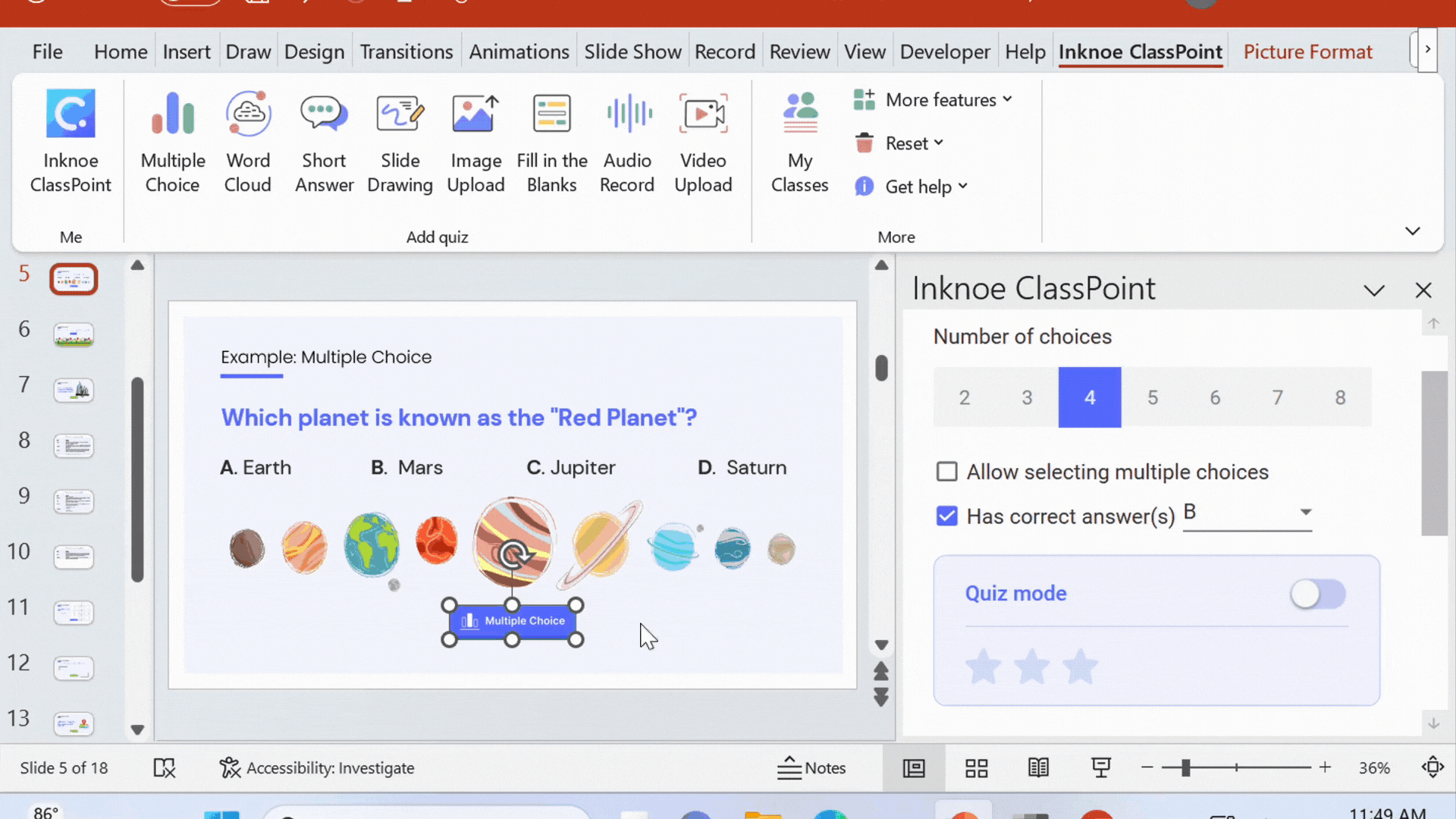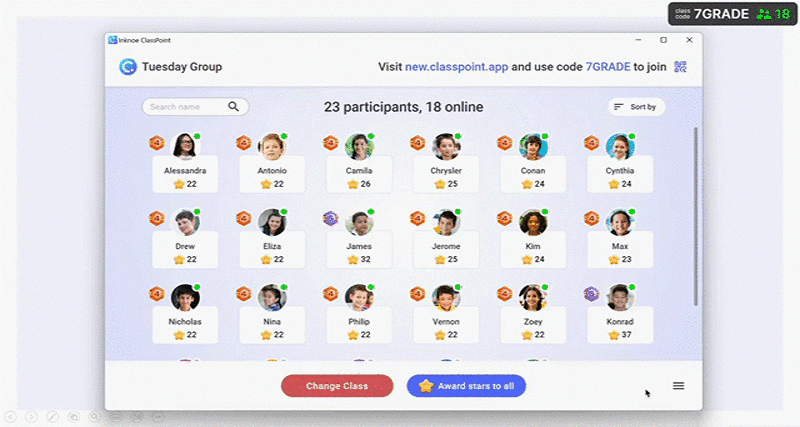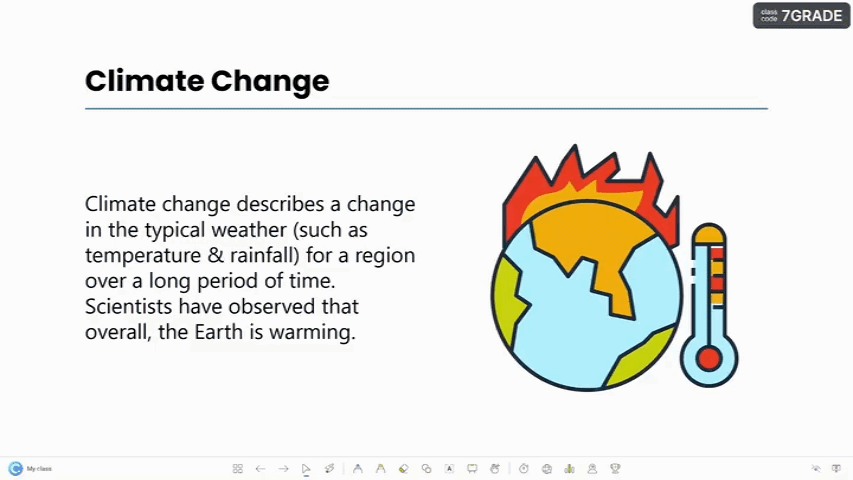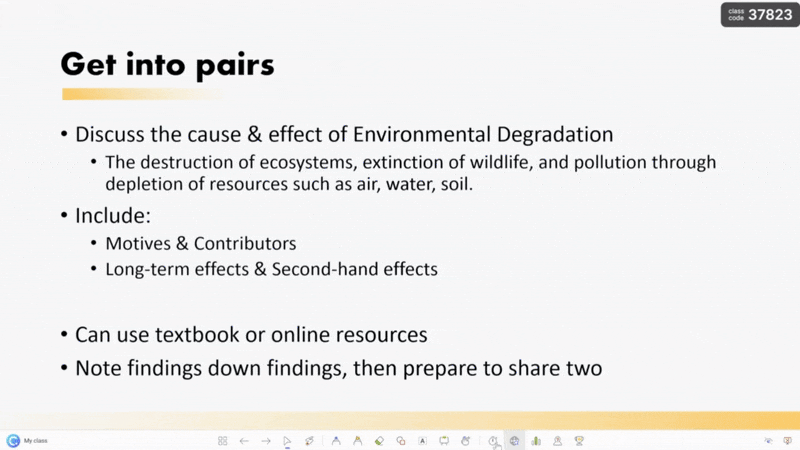Effective communication hinges on comprehension, which covers the ability to grasp and interpret information. This skill is especially important when it comes to reading, where encountering unfamiliar concepts or deciphering complex passages can be daunting.
However, recent studies paint a concerning picture, where reading comprehension scores among students are on the decline, especially since the COVID-19 pandemic. This decline translates to a real-world struggle for students to grasp complex information, analyze arguments, and ultimately, think critically.
This is where reading comprehension questions come in. They serve as a valuable tool to assess understanding and ignite student engagement with text and advocate deeper learning.
This guide delves into the various types of comprehension questions, equipping readers with the necessary knowledge and strategies to conquer any reading challenge. By the end of this guide, you’ll be equipped to:
- Craft engaging activities that promote active learning with comprehension questions.
- Utilize visuals and technology to enhance understanding and cater to diverse learning styles.
- Employ formative assessment strategies to identify areas of confusion and adjust your teaching approach.
- Encourage collaborative learning through group discussions and activities.
- Explore a variety of question formats to effectively evaluate different comprehension skills.
Plus, gain access to a free downloadable PDF, containing all the reading comprehension question types covered in this guide. Are you ready to unlock the full potential of comprehension questions in your classroom? Let’s dive in!
Understanding Comprehension Questions
What is a Comprehension Question?
Comprehension questions, in essence, are queries designed to assess one’s understanding of a text. They are employed in various contexts, including standardized tests, classroom assessments, and even everyday situations where clear information retention is crucial.
These comprehension questions have various applications in both educational and professional contexts. In standardized testing, they provide a reliable measure of reading comprehension skills across educational levels.
Educators utilize them to gauge student learning and identify areas that require additional instruction, allowing for personalized learning approaches. Even in technical fields like healthcare or engineering, where clear communication is essential, comprehension questions can assess a reader’s ability to grasp complex instructions or technical information.
Benefits of Integrating Comprehension Questions in Classroom Teaching

By effectively answering comprehension questions, individuals demonstrate their ability to:
- Information Extraction: Readers must be able to precisely identify and retain the critical details presented within the text.
- Analysis and Interpretation: Going beyond comprehension, readers engage in critical thinking. They decipher the author’s intended message, underlying themes, and the overall purpose of the text.
- Draw Connections: Comprehension questions encourage readers to establish meaningful links between different ideas and concepts presented in the text, fostering a holistic understanding of the information.
- Knowledge Application: The ultimate aim isn’t just to read and comprehend; it’s to leverage the acquired knowledge in practical scenarios. This transferable skill empowers readers to apply their understanding to real-world situations.
15 Types of Comprehnsion Questions With Examples
Ready to put these tips into action? Download your free, printable set of comprehension questions (covering all 15 question formats!) as a PDF below!
Types of Comprehension Questions
#1 Literal Comprehension Questions
Literal comprehension questions focus on grasping the surface-level information presented in a text. These questions typically require readers to recall specific details explicitly stated within the passage.
When to Use Literal Comprehension Questions:
- Use when assessing basic understanding of factual information.
- Suitable for readers who are new to analyzing texts or are at an introductory reading level.
Grade Level: 1-3 (Elementary)
Examples:
- What is the main idea of the first paragraph?
- Where does the story take place?
- How many siblings does the protagonist have?
- What color was the car described in the passage?
- What is the title of the book mentioned in the first paragraph?
#2 Inferential Comprehension Questions

Inferential comprehension questions prompt readers to delve deeper into the text, moving beyond the explicit details to uncover implied meanings and infer conclusions.
When to Use Inferential Comprehension Questions:
- Use when evaluating students’ ability to draw logical conclusions based on evidence from the text.
- Suitable for readers who have a basic grasp of literal comprehension and are ready to infer deeper meanings.
Grade Level: 4-6 (Middle School)
Examples:
- Why do you think the character chose to keep their decision a secret?
- What might have motivated the protagonist to make such a risky decision?
- Based on the characters’ actions, what can you infer about their relationship with their family?
- What does the author imply about the protagonist’s future plans?
- How do the weather descriptions throughout the story symbolize the protagonist’s emotional state?
#3 Evaluative Comprehension Questions
Evaluative comprehension questions encourage readers to critically analyze the text, form opinions, and make judgments based on the evidence provided.
When to Use Evaluative Comprehension Questions:
- Use when prompting students to consider the text’s themes, values, and moral implications.
- Suitable for readers who have a solid understanding of literal and inferential comprehension and are ready to engage in critical analysis.
Grade Level: 7-9 (High School)
Examples:
- Do you think the protagonist made the right choice in the given situation? Why or why not?
- How effective was the author in conveying the theme of friendship in the story?
- Did the ending of the book satisfy you? Why or why not?
- Do you agree with the character’s decision to confront their fears? Explain your reasoning.
- How successful was the author in creating a sense of suspense throughout the narrative?
#4 Applied Comprehension Questions
Applied comprehension questions challenge readers to extend their understanding beyond the text and apply it to real-life scenarios or hypothetical situations.
When to Use Applied Comprehension Questions:
- Use when encouraging students to make connections between the text and their personal experiences or the world around them.
- Suitable for readers who are ready to apply their understanding of the text to broader contexts.
Grade Level: 7-9 (High School)
Examples:
- How could the protagonist’s experience relate to a similar situation you’ve encountered in your own life?
- How could the lessons learned by the protagonist be applied to real-life situations?
- What strategies could the characters have used to avoid the conflicts they faced?
- How might the themes explored in the passage relate to current events in society?
- How could the protagonist’s experiences help someone facing similar challenges?
#5 Synthesis Comprehension Questions
Synthesis comprehension questions involve integrating information from multiple sources or parts of the text to form a cohesive understanding.
When to Use Synthesis Comprehension Questions:
- Use when challenging students to analyze and synthesize various elements of the text to gain a deeper understanding of its themes and messages.
- Suitable for readers who are ready to engage in complex textual analysis and interpretation.
Grade Level: 9-12 (Advanced High School/College)
Examples:
- How does the author use symbolism, imagery, and characterization to convey the theme of identity in the novel?
- How do different themes intersect in the text?
- How do the various subplots contribute to the overall development of the main theme?
- What connections can you draw between this text and other works you’ve read?
- How does the author weave together multiple perspectives to create a unified narrative?
#6 Analytical Comprehension Questions

Analytical comprehension questions require readers to dissect complex ideas, text structures, and literary devices employed by the author.
When to Use Analytical Comprehension Questions:
- Use when prompting students to analyze the author’s craft and literary techniques in depth.
- Suitable for readers who are prepared to engage in detailed textual analysis and interpretation.
Grade Level: 9-12 (Advanced High School/College)
Examples:
- How does the author use foreshadowing to build suspense throughout the story?
- What impact does the author’s use of dialogue have on character development?
- How does the narrative structure contribute to the reader’s understanding of the protagonist’s journey?
- What themes emerge from the recurring motifs found in the text?
- How does the author employ irony to convey deeper layers of meaning?
#7 Creative Comprehension Questions
Creative comprehension questions stimulate imaginative thinking and encourage readers to explore alternative interpretations and perspectives beyond the text.
When to Use Creative Comprehension Questions:
- Use when fostering creativity, originality, and critical thinking skills.
- Suitable for readers who are ready to engage in imaginative exploration and expression
Grade Level: 7-9 (High School)
Examples:
- Rewrite a key scene from the perspective of a different character. How does this change the reader’s understanding of the event?
- Imagine an alternate ending to the story. How would this alter the overall message of the text?
- Invent a new character who could fit seamlessly into the narrative. How would their presence impact the story?
- Design a book cover that encapsulates the central themes and emotions of the text. Explain your design choices.
- Write a letter from one character to another, expressing their innermost thoughts and feelings about a pivotal moment in the plot.
#8 Open-ended Comprehension Questions
Open-ended comprehension questions stimulate discussion and exploration beyond the text, inviting readers to express their opinions, insights, and interpretations freely.
When to Use Open-ended Comprehension Questions:
- Use when encouraging deep reflection, critical thinking, and diverse perspectives.
- Suitable for readers who are ready to engage in open-ended inquiry and discussion.
Grade Level: 7-9 (High School)
Examples:
- What are some possible outcomes or implications of the events described in the passage? How might different characters perceive these events differently?
- How does the author’s use of symbolism contribute to the richness of the text? Provide examples to support your analysis.
- What unanswered questions or ambiguities linger after reading the passage? How do these contribute to the overall impact of the text?
- In what ways does the passage challenge or subvert traditional literary conventions? How does this enhance its significance?
- How might the themes explored in the text resonate with readers from different cultural backgrounds or life experiences? Discuss.
#9 Reflective Comprehension Questions

Reflective comprehension questions encourage introspection and personal connection with the text, prompting readers to consider how the themes, characters, and ideas presented in the text relate to their own experiences, beliefs, and values.
When to Use Reflective Comprehension Questions:
- Use when cultivating self-awareness, empathy, and emotional engagement with the text.
- Suitable for readers who are ready to reflect on their personal connections to the text and its themes.
Grade Level: 7-9 (High School)
Examples:
- How does the protagonist’s journey mirror your own experiences or challenges in life?
- Reflect on a moment in the text that elicited a strong emotional response from you. What aspects of the writing contributed to this reaction?
- Consider the central themes of the passage. How do they align with your personal beliefs or values?
- Has reading this text changed your perspective on any aspect of life or human nature? If so, how?
- Imagine yourself in the shoes of one of the characters. How would you have acted differently in their situation, and why?
#10 Comparative Comprehension Questions
Comparative comprehension questions prompt readers to compare and contrast different texts or viewpoints, analyzing similarities, differences, and underlying themes.
When to Use Comparative Comprehension Questions:
- Use when encouraging critical analysis, synthesis of information, and consideration of multiple perspectives.
- Suitable for readers who are ready to engage in comparative literary analysis and interpretation.
Grade Level: 9-12 (Advanced High School/College)
Example:
- Compare the motivations of two protagonists from different texts. How do their backgrounds and circumstances influence their decisions?
- Contrast the narrative styles of two different authors. How do their approaches to storytelling shape the reader’s experience?
- Compare the themes of love and betrayal in two different works of literature. How do the authors explore these themes differently?
- Analyze the use of symbolism in two poems. How do the symbols contribute to the overall meaning of each poem?
- Compare the societal contexts depicted in two different novels. How do these contexts shape the characters’ beliefs and actions?
#11 Predictive Comprehension Questions
Predictive comprehension questions foster anticipation and speculation about future events or outcomes within the text, prompting readers to make informed predictions based on evidence and foreshadowing provided by the author.
When to Use Predictive Comprehension Questions:
- Use to create anticipation while encouraging critical thinking and engagement with the text’s plot developments.
- Suitable for readers who are ready to make logical predictions based on textual evidence and analysis.
Grade Level: 4-6 (Middle School)
Examples:
- Based on the character’s actions and the events leading up to this point, what do you predict will happen next in the story?
- How might the protagonist’s decisions affect the outcome of future events?
- What obstacles do you foresee the characters encountering as they pursue their goals?
- What clues or hints in the text suggest possible plot twists or developments?
- How might the resolution of the conflict impact the characters’ relationships and future choices?
#12 Relevant Comprehension Questions

Relevant comprehension questions assess the relevance of specific information within the text to broader themes, contexts, or real-world issues.
When to Use Relevant Comprehension Questions:
- Use when prompting students to consider the text’s implications and relevance to broader social, cultural, or historical contexts.
- Suitable for readers who are ready to engage in critical analysis and application of the text’s themes to real-world issues.
Grade Level: 7-9 (High School)
Examples:
- How does the historical context of the setting influence the characters’ perspectives and actions in the story?
- In what ways does the text reflect or challenge prevailing cultural norms or societal values?
- How do the themes explored in the passage relate to contemporary issues or debates?
- What relevance does the protagonist’s journey have to readers facing similar challenges in their own lives?
- How might the lessons learned by the characters be applied to real-world situations or challenges?
#13 Text Structure Comprehension Questions
Text structure comprehension questions focus on investigating the organizational patterns and rhetorical devices employed by the author to convey meaning.
When to Use Text Structure Comprehension Questions:
- Use when prompting students to analyze the structural elements and rhetorical devices used by the author to convey meaning.
- Suitable for readers who are ready to engage in a detailed analysis of the text’s structure and stylistic elements.
Grade Level: 7-9 (High School)
Examples:
- How does the author use flashback sequences to enhance the narrative structure of the story?
- Analyze the chronological structure of the story. How does the sequence of events impact the reader’s understanding?
- Identify the use of transitions between paragraphs. How do these transitions help to connect ideas and enhance readability?
- Examine the organization of the text into sections or chapters. How does this structure contribute to the overall flow of the narrative?
- Discuss the author’s choice of narrative perspective. How does the point of view affect the reader’s perception of the characters and events?
#14 Language Use Comprehension Questions

Language use comprehension questions analyze the nuances of language and its impact on meaning, tone, and atmosphere within the text.
When to Use Language Use Comprehension Questions:
- Use when prompting students to analyze the author’s choice of language and literary devices to convey meaning and evoke emotion.
- Suitable for readers who are ready to engage in detailed analysis of language and its impact on the text’s meaning and tone.
Grade Level: 7-9 (High School)
Examples:
- How does the author’s use of vivid imagery contribute to the reader’s understanding of the setting and mood in the poem?
- Analyze the author’s use of figurative language in the passage. How do metaphors or similes enhance the reader’s understanding?
- Discuss the author’s use of tone throughout the passage. How does the tone affect the reader’s interpretation of the content?
- Examine the dialogue between characters. How does the author use dialogue to reveal personality traits and advance the plot?
- Evaluate the author’s choice of words and phrases. How does the language contribute to the overall style and impact of the writing?
#15 Cultural Context Comprehension Questions
Cultural context comprehension questions explore the cultural, historical, or societal context that informs the text, prompting readers to consider how these factors influence the text’s themes, characters, and plot developments.
When to Use Cultural Context Comprehension Questions:
- Use when fostering an understanding of how cultural, historical, or societal factors influence the text’s themes and characters.
- Suitable for readers who are ready to engage in critical analysis of the text’s cultural context and implications.
Grade Level: 7-9 (High School)
Examples:
- How does the cultural background of the protagonist shape their identity and experiences in the novel?
- Discuss the cultural traditions depicted in the passage. How do these traditions shape the characters’ identities and relationships?
- Analyze the societal norms portrayed in the text. How do these norms reflect broader cultural attitudes and values?
- Examine the portrayal of diverse cultural perspectives within the narrative. How does the text promote empathy and understanding across different cultural contexts?
- Consider the impact of cultural heritage on the characters’ experiences and worldviews. How does this influence their interactions with each other and the world around them?
How to Enhance Reading Skills & Transform Comprehension Questions into Engaging Learning Experiences
Comprehension questions are a cornerstone of effective reading instruction, but simply asking them doesn’t guarantee active learning. Here’s how to transform comprehension questions into engaging learning experiences that truly elevate your students’ learning journey:

🙋🏻 Interactive Activities: Move beyond static worksheets with simple multiple-choice quizzes and lectures. Craft engaging activities like live polls, quizzes, and open-ended questions that prompt students to actively grapple with the text. This fosters a dynamic learning environment where comprehension is assessed and reinforced throughout the lesson. This approach ensures you’re effectively evaluating different comprehension skills for all your students.
Pro Tip: Planning an engaging quiz doesn’t have to be a chore. Create interactive quizzes straight on your PowerPoint slides with ClassPoint, the #1 student engagement tool chosen by teachers worldwide!

🖼️ Visual Appeal: The human brain thrives on visuals. Incorporate images, draggable diagrams, and even videos into your comprehension questions. This approach goes beyond simply testing reading skills; it encourages students to connect visual information with the text, leading to a deeper understanding.
Pro Tip: Change up your quizzing methods by incorporating Word Cloud, Slide Drawing, and Video & Image Upload that brings out your pupils’ creative sides. Learn how to make your PowerPoint presentation more visually appealing and interactive.

✏️ Formative Assessment: Regularly assess comprehension throughout the lesson, not just at the end. This allows you to identify areas of confusion early on and adjust your teaching approach accordingly. Use techniques like quick exit tickets or peer discussions to gather real-time feedback.
Pro Tip: Need ideas from out-of-the-box formative assessment questions? Check out this repository of questions for kindergarteners, science class, math students, and queries inspired by Bloom’s Taxonomy.

🤝 Collaborative Learning: Learning doesn’t have to be a solitary endeavor. Encourage student collaboration by incorporating group discussions or activities centered around answering comprehension questions. This fosters peer learning, allowing students to explain concepts to one another and solidify their own understanding.
Pro Tip: Get everyone to participate equally in your activities (yes, even the shy ones), by using a Random Name Picker. This way, students can step outside their comfort zones in a safe environment.

🎮 Gamified Experiences: Turn comprehension questions into engaging games to captivate students’ attention and foster a competitive spirit. Incorporate elements such as stars, badges, and leaderboards to incentivize participation and reward achievement. Gamifying comprehension activities lets you transform learning into an immersive and enjoyable experience, motivating students to actively participate and strive for mastery of the material.
Pro Tip: Make reading comprehension more fun by holding a PowerPoint trivia game, with presentation templates inspired by game shows like Family Feud, Jeopardy, and Wheel of Fortune!

✍️ Utilize Margin Annotations: Upon answering comprehension question, teach using slide annotations, highlight key points, provide summaries, or draw connections to prior knowledge. This active engagement promotes deeper comprehension and critical thinking skills, fostering a deeper connection with the material and enhancing overall retention.
Pro Tip: You don’t have to mark your precious hard copies to annotate! Import your text as a PowerPoint slide and annotate straight on your presentation using ClassPoint’s presentation tool kit which includes pens, textboxes, draggable shapes, and more.

⏳ Develop Time Management Techniques: Teach students effective time management strategies, such as allocating appropriate time for each comprehension question during assessments. This skill empowers students to navigate tasks efficiently and confidently, reducing test-taking anxiety and allowing them to approach assessments with greater ease and focus.
Pro Tip: ClassPoint's Timer & Stopwatch helps students practice effective time management during activities and assessments. By setting time limits for each question on your PowerPoint slides, students can learn to allocate their time wisely.
By employing these strategies, you can transform comprehension questions from passive assessments into engaging learning experiences. This approach keeps students actively involved, sharpening critical thinking skills, and ultimately empowers them to unlock the full potential of every text they encounter.
Final Thoughts
Throughout this guide, we’ve explored the diverse types of comprehension questions and their role in enhancing reading skills. By engaging with these questions, students can sharpen their critical thinking abilities, deepen their understanding of texts, and make meaningful connections with the material.
But, the ultimate goal isn’t just about answering questions correctly, but about encouraging a genuine understanding of the text. This can be achieved by incorporating visuals, technology, and collaborative activities into your lessons. These dynamic approaches not only make learning fun but also empower students to develop critical thinking and analytical skills that extend far beyond the classroom.
Wield these questions effectively, and you’ll witness your students blossom into confident readers, equipped to tackle any text with enthusiasm and a thirst for knowledge. So, unleash the power of comprehension questions and embark on a journey of discovery through reading with your students!
